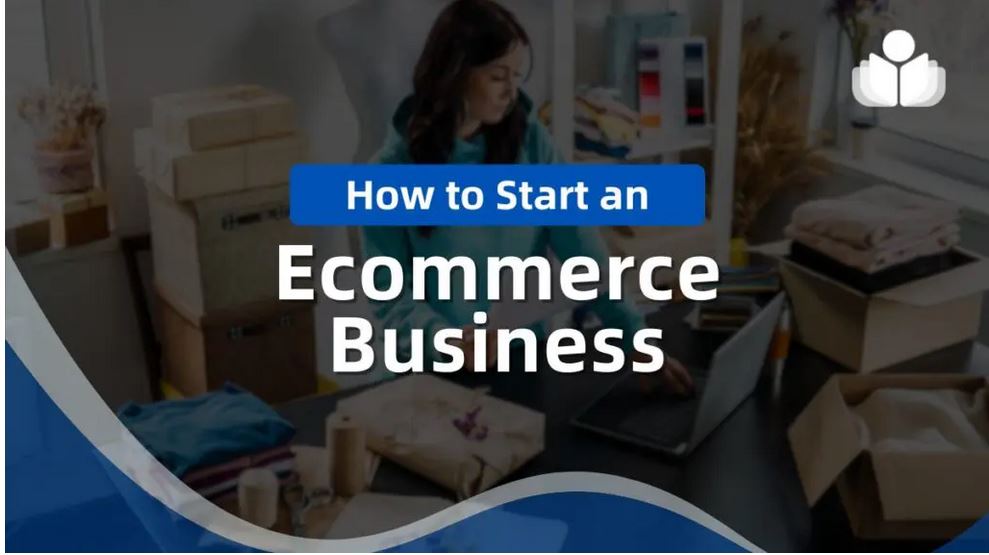An easy-to-follow guide on how to establish your first eCommerce business.
ECommerce business setup- your one exciting venture in setting up and running a good-quality online company. Whether one wants to sell their eCommerce business in the future or create a brand that would stand the test of time, laying solid foundations is a must. In this blog post, we will take you through a step-by-step guide on setting up your very first eCommerce, whether on Amazon when launching a Shopify website or even developing a WordPress eCommerce store.
Define Your Niche
Define your niche. What are you going to sell? The first source of information in finding a profitable niche includes researching trends in the market and identifying gaps.
Market Research: Find out the sorts of products that are trending today using Google Trends or social media. Choose something you like or an experience you have-this way, running an eCommerce business will be fun.
Competitor Analysis: Analyze the best Shopify stores or the most visited web pages in your niche. See their product, prices, and contact methods to locate their strength.
Decide What Business Model You Should Choose
Once you have determined your niche, it is then time to choose your business model. Some of the options available include
Drop-shipping: Suppliers sell products directly to customers with no holding of inventories. This happens to be one of the lowest entry points for most new entrepreneurs.
Wholesale: Buy products in volume; the same products are sold at retail price. It does tend to generate higher profit margins, but there is a pre-requisite investment required.
Handmade or Custom Products: Sell unique, handmade, or custom items. A place to start here is Etsy.
Choose an ECommerce Platform
The right eCommerce website development services for your business make all the difference. Here are some of the most popular options:
Shopify: This is pretty user-friendly. One can create an online store quite easily and get it set up within a few minutes, and it hosts some of the best Shopify stores as well as popular Shopify stores.
WooCommerce: If you have some familiarity with WordPress, it might seem to be the perfect choice to go ahead with WooCommerce due to the extreme amount of customizing capabilities for your WordPress eCommerce shop through this WordPress and WooCommerce store integration.
Amazon: Opening an Amazon eCommerce business can introduce you to millions of customers. So start by selling on Amazon and eventually work your way up to your website.
Build Your Ecommerce Website
With your choice of platform, it’s now time to build your eCommerce website. Here are the steps you can take
1. Choose a Domain Name: The domain name has to be brandable and must be memorable. You can choose it from services like Namecheap or GoDaddy.
2. Theme Selection: Select a theme that not only looks highly beautiful but also serves the function. For Shopify, you can go ahead and look at the themes that some of the best Shopify stores or top Shopify websites use.
3. Products: Include pictures and descriptions of your products to give the visitors an added view. Keep your prices competitive.
4. Payment Options: Include the best reliable payment options. PayPal, Stripe, or Shopify Payments will help with quick payments for customers.
5. Shipping: Decide your shipping methods, shipping costs, and policies. In most cases, you will attract more customers by including free shipping.
SEO Optimization
Optimize your eCommerce store for search. Make sure your storefront pops up when people use your keywords to find what they’re looking for.
Keyword Research: Use Google Keyword Planner, among other tools, to explore relevant keywords in your niche. Place them into the descriptions and titles of the products and in the posts of your blogs.
On-page SEO: Optimize Meta tags, headings, and URLs on the website. The use of headings must be clear and concise so that search engines can get a feel of what your content is all about.
Blogging: Blogging about your niche on a website to get more traffic and SEO ranking. This is one of the most common strategies found in the largest eCommerce shops.
Roll-out of Your Marketing Strategy
Once your website is up, it’s time to promote your website.
Social Media Marketing: Make accounts on social media platforms, which include Instagram, Facebook, and Pinterest. Advertise your product by posting content to your target audience, holding contests, and perhaps some special offers.
Email Marketing: Create an email list with a discount coupon or exclusive content. Remember to regularly send out newsletters to remind the customers of the new items and the promotion.
(PPC) Pay-Per-Click Advertising: PPC campaigns on Google Ads or Facebook Ads will surely attract targeted traffic at the soonest possible time.
Focus on Service
Great customer service is the advantage that sets you apart from other businesses.
Respond quickly: Respond to customers’ questions promptly. To respond quickly on your website, you can use chatbots to immediately answer the question.
Easy Returns Policy: Making your returns policy transparent may get more buyers to your place. Your policy of transparency is a trust placed on your customers.
Monitor and Change
Once you set up the store, and it becomes live, you should monitor your performance and adjust in due course.
Monitor visitor behavior and sales data with the help of Google Analytics. You will know what is working and what is not, and this should be learned to apply to your strategies accordingly.
Encourage reviews and responses: Based on this, you can enhance your products and services. Positive reviews can also give more credibility to your store.
Plan for Growth: When business starts picking up, start planning for a long-term growth strategy.
Product Lines Expansion: Ancillary and complementary product lines serve an even broader and different customer base while increasing the average order.
New Sales Channels: Marketplaces like Etsy or eBay to open up the marketplace further.
Consider Future Options
By this point, your store is up and running. Whether it’s time to keep growing or thinking about future exit strategies, you’ll find yourself considering all of these aspects in the next steps.
Sell ECommerce Business: Maybe, you have the most promising brand and you just want to sell your eCommerce business for some kind of return. You need to research the market about things those buyers would look for.
Buy ECommerce Business: If you genuinely want to diversify your portfolio then you could always look out for opportunities to buy an eCommerce business that will suit your brand.
Conclusion
Opening your first eCommerce business can be the most fulfilling idea and provides you with lots of opportunities. All starts with building your online store and the ending with marketing and monitoring because every step is essential in making the venture successful. Basic working knowledge of how to take each step through this constantly changing landscape of Shopify sites, WordPress, and WooCommerce stores is a solid foundation for the brand. So, effectively, as you go along, it would only be apt to think of possible opportunities in selling an eCommerce business.


